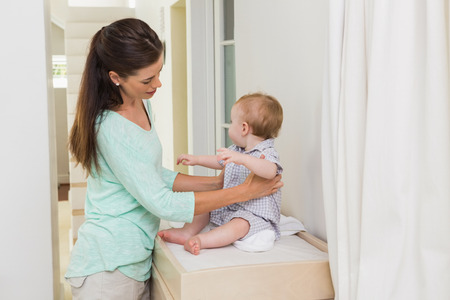1. Introduction to SIDS and Its Relevance in the UK
Sudden Infant Death Syndrome (SIDS), commonly known as “cot death,” is the unexpected and unexplained death of an otherwise healthy baby, typically during sleep. In the United Kingdom, SIDS remains a critical concern for families, healthcare professionals, and public health authorities alike. Although advances in research and awareness campaigns have led to a significant decline in cases over recent decades, it is still a leading cause of post-neonatal mortality among infants aged one month to one year. According to recent data from The Lullaby Trust and NHS England, approximately 200 babies die each year from SIDS in the UK. This statistic highlights the ongoing need for vigilance and education around risk factors that can be modified within the home environment. Understanding these risks—including room temperature—enables parents and carers across Britain to create safer sleep conditions, ultimately reducing the likelihood of SIDS and offering greater peace of mind.
2. Why Room Temperature Matters for Infant Safety
Maintaining the correct room temperature is a crucial aspect of safe infant sleep and is strongly linked to the prevention of Sudden Infant Death Syndrome (SIDS). Scientific research, including studies referenced by The Lullaby Trust and NHS guidelines, highlights that overheating is a significant risk factor for SIDS. Infants are less able to regulate their body temperature compared to adults, making them more vulnerable to both excessive heat and cold. UK experts recommend keeping the nursery temperature between 16°C and 20°C (approximately 61°F to 68°F) as the safest range for babies.
| Temperature Range | Risk Level (Based on UK Research) | Recommended Action |
|---|---|---|
| Below 16°C | Increased risk of baby becoming too cold | Add light layers or use a suitable baby sleeping bag |
| 16°C – 20°C | Lowest SIDS risk; optimal for infant safety | Maintain this temperature with appropriate bedding |
| Above 20°C | Higher risk of overheating and SIDS | Avoid heavy bedding and consider cooling methods |
The scientific link between nursery temperature and SIDS risk is well-documented in UK-based studies. Overheating can disrupt an infants normal breathing patterns and ability to arouse from sleep, two factors that are believed to play roles in SIDS. The NHS specifically warns against heavy duvets, electric blankets, or hot water bottles in cot beds. Instead, parents are advised to use lightweight bedding and regularly check the babys neck or tummy to ensure they are not too hot or too cold. By adhering to these guidelines and monitoring the nursery’s environment with a reliable room thermometer, UK families can significantly reduce the risk associated with improper room temperatures.

3. Recommended Room Temperature Guidelines for UK Homes
Ensuring the correct room temperature is a key factor in reducing the risk of Sudden Infant Death Syndrome (SIDS), especially in UK climates where temperatures can vary significantly throughout the year. The NHS and leading UK health authorities recommend that the ideal room temperature for infants should be maintained between 16°C and 20°C (61°F to 68°F). This range helps prevent overheating, which is a known risk factor for SIDS, while also ensuring babies remain comfortably warm.
Why Is This Temperature Range Important?
Babies are less able to regulate their body temperature compared to adults, making them more vulnerable to both overheating and chilling. Keeping your baby’s sleeping environment within the recommended range offers optimal safety and comfort, particularly during colder British winters or unexpected heatwaves in summer.
Practical Tips for Maintaining Ideal Room Temperature
- Use a reliable room thermometer in the area where your baby sleeps.
- Adjust central heating or use a thermostatic radiator valve to keep rooms within the safe range.
- Avoid placing your babys cot near radiators, heaters, direct sunlight, or draughty windows.
- Dress your baby appropriately for the season using lightweight sleepwear and avoid heavy bedding or duvets.
Recommended Room Temperatures by Age
| Age Group | Recommended Room Temperature |
|---|---|
| Newborn to 12 months | 16°C – 20°C (61°F – 68°F) |
Monitoring and adjusting the room temperature according to these guidelines can make a significant difference in infant sleep safety. Remember, feeling your babys chest or back (not hands or feet) is the best way to check if they are comfortably warm—not too hot or cold. Always follow NHS recommendations and consult with your health visitor if you have any concerns about your home environment.
4. Tips for Maintaining Safe Room Temperatures Year-Round
Maintaining a safe and consistent room temperature is crucial for reducing the risk of Sudden Infant Death Syndrome (SIDS) in UK homes, where weather conditions can fluctuate dramatically between seasons. Here are expert, culturally relevant tips to help parents and carers keep their babys sleeping environment at the optimal temperature all year round.
Heating Advice for UK Winters
UK winters can be chilly, especially in older or poorly insulated homes. Central heating systems are common, but its important not to overheat the nursery. Set your thermostat to maintain a room temperature between 16°C and 20°C (61°F–68°F). Avoid using electric blankets or hot water bottles in your baby’s cot, as these can lead to overheating.
Winter Room Heating Checklist
| Tip | Details |
|---|---|
| Thermostat Setting | Set between 16°C–20°C; use a room thermometer for accuracy. |
| Draught-proofing | Seal windows and doors to minimise cold draughts without blocking ventilation. |
| Cot Placement | Keep the cot away from radiators and direct heat sources. |
| Layering Clothing | Dress baby in lightweight layers; use a sleep bag with appropriate tog rating (see table below). |
Ventilation Tips for UK Summers
During warmer months or unexpected heatwaves, its essential to prevent overheating. Open windows slightly for airflow, but ensure they are secure and safe. Use blackout blinds to block out sunlight during the hottest part of the day. Avoid fans blowing directly on your baby, but gentle air circulation is helpful.
Tog Rating Guide for Baby Sleep Bags (UK)
| Room Temperature | Recommended Tog |
|---|---|
| 24°C+ | 0.5 tog or just a vest/bodysuit |
| 21–23°C | 1.0 tog with light clothing underneath |
| 18–20°C | 2.5 tog with regular sleepwear |
| 16–17°C | 2.5 tog with an extra layer underneath |
Culturally Appropriate Habits for UK Families
Avoid heavy duvets or quilts which are common in adult bedding but unsafe for babies. Instead, opt for fitted cotton sheets and cellular blankets if needed. Many UK parents find it helpful to use a room thermometer—these are widely available at local chemists such as Boots or Mothercare.
Quick Reference: Daily Nursery Temperature Checks
- Check the nursery temperature morning and evening.
- If using a portable heater, ensure it has a thermostat and automatic shut-off.
- If you notice condensation, ventilate the room daily to prevent dampness.
- Avoid swaddling too tightly or overdressing your baby—always feel their chest or back to check if they’re comfortably warm but not sweaty.
By following these simple yet effective tips, UK families can create a safer sleep environment that adapts to Britain’s varied climate while keeping SIDS risks lower throughout the year.
5. Common Myths and Mistakes in UK Households
Despite widespread awareness campaigns, some myths and unsafe practices persist in UK households when it comes to keeping babies safe from SIDS. It’s crucial for parents and caregivers to distinguish between well-meaning but outdated advice and evidence-based recommendations on maintaining the right room temperature.
Myth vs. Fact: Room Temperature Practices
| Common Myth | The Facts |
|---|---|
| Babies need extra layers or thick blankets to stay warm at night, especially in winter. | Over-bundling can actually increase the risk of overheating, a known SIDS risk factor. The ideal room temperature for a baby is 16–20°C (60–68°F). Use a lightweight sleep bag or blanket as per guidance. |
| Using hot water bottles or electric blankets keeps baby comfortable during cold weather. | Hot water bottles and electric blankets should never be used in a baby’s cot as they can lead to dangerous overheating and pose burn risks. |
| If a baby’s hands or feet feel cool, they must be too cold overall. | It’s normal for babies’ extremities to feel cooler; check their chest or back for warmth instead. This is a more reliable indicator of their overall temperature. |
Best Practice for UK Parents
- Always monitor your babys sleeping environment with a room thermometer, particularly in homes with varying insulation or central heating systems common across the UK.
- Avoid placing cots near radiators, heaters, or direct sunlight through windows—these areas can fluctuate in temperature rapidly.
- If using a baby sleeping bag, choose one with an appropriate tog rating for the season (e.g., 2.5 tog for most of the year; 1.0 tog during summer months).
Summary of Key Mistakes to Avoid
- Do not overdress your baby or use multiple heavy blankets.
- Nix hot water bottles, wheat bags, and electric blankets entirely from your babys sleep routine.
- Avoid relying on how cold or warm your own bedroom feels as a guide—babies have different temperature needs.
Expert Tip:
If you’re unsure about your home’s temperature at night, invest in a simple room thermometer and regularly check it—this small step makes a significant difference in SIDS prevention in British homes.
6. Expert Recommendations and Resources
When it comes to reducing the risk of Sudden Infant Death Syndrome (SIDS) in UK homes, expert consensus strongly emphasises the importance of maintaining an appropriate room temperature and safe sleep environment for babies. The Lullaby Trust, NHS, and other leading child health organisations provide clear guidance based on the latest research. Below is a summary of their key recommendations:
| Expert Organisation | Key Recommendation | Resource Link |
|---|---|---|
| The Lullaby Trust | Keep the babys room between 16-20°C (61-68°F); use a room thermometer; avoid heavy bedding and overheating. | Lullaby Trust Room Temperature Guidance |
| NHS | Put babies to sleep on their back in a cot or Moses basket in the same room as parents for the first six months; ensure the room is not too hot. | NHS SIDS Advice |
| Royal College of Paediatrics and Child Health (RCPCH) | Regularly check your baby’s temperature by feeling their chest or the back of their neck—hands and feet can often feel cool, which is normal. | RCPCH Safe Sleeping Guidelines |
Further Support for UK Parents
If you have concerns about your home environment or need tailored advice, consider reaching out to your health visitor or GP. Many local councils also offer family support services. For further information, visit:
Summary of Best Practices
- Maintain room temperature within 16-20°C.
- Avoid duvets, quilts, and pillows for infants under one year.
- Use lightweight blankets if needed and tuck them in no higher than the shoulders.
Your Trusted Sources Matter
Always refer to reputable UK-based resources when seeking advice on SIDS prevention. Following evidence-based guidance ensures your baby sleeps in the safest possible environment. If ever in doubt, consult with healthcare professionals who are familiar with current UK guidelines.


